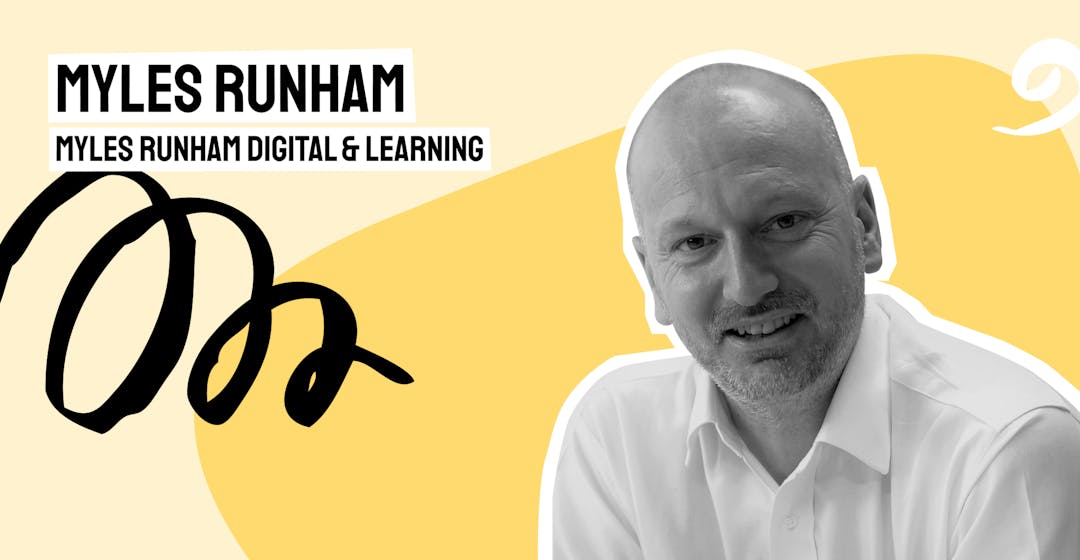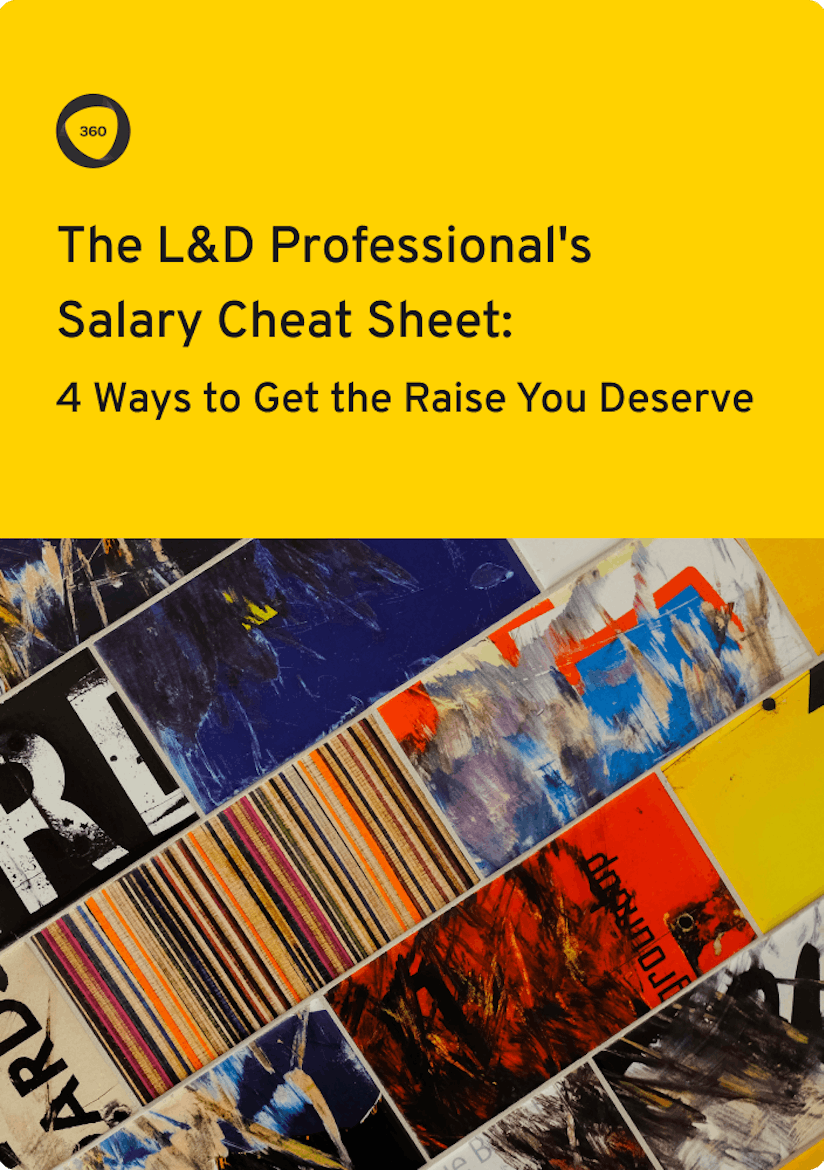
L&D Plus Product Design: How to Create Better Learning Experiences By Focusing on User Need
Imagine the possibilities in learning and development if you were able to turn the many disruptions within our industry over the last couple of years to your advantage. Intriguing, right?
For Myles Runham, Independent Learning Consultant, this question has been an obsession. In recent years, Myles has been working with some of the biggest names in UK business to spin disruption into gold with the right focus on learner needs and product design.
In the latest episode of L&D Plus, we had the pleasure to sit down with Myles and discuss how L&D leaders can take our current state of flux with COVID-19, the Great Resignation, and the shift to hybrid work, and make some long-overdue shifts in the way we learn today.
If you’re saving the podcast for later, we’ve distilled the main takeaways below.
Recent disruption has created an opportunity within L&D–let’s not miss it
In Myles’s experience, the COVID-19 pandemic and related disruptions created an opportunity to pivot L&D strategy and deliver the kinds of learning experiences people really need. Unfortunately, most people missed the opportunity, deciding instead to simply switch their delivery methods rather than fundamentally revisiting their L&D strategies.
In other words, the pandemic closed classrooms, and most L&D teams pivoted to delivering the exact same learning in a digital forum. So, why is this? As Myles says, it’s because at heart, L&D leaders love delivering events and content.
“I think that focus on the switch to learning delivery in the pandemic is what's being questioned now,” explains Myles. “We’re asking: ‘is there something more subtle and sophisticated, and therefore more powerful, that we need to look at?’ And I think that's where the market is shifting. It goes beyond how we deliver learning–it’s about using L&D to solve urgent problems.”
So, how exactly can we make this shift? As Myles says, it all comes down to product design.
Are you getting what you deserve when it comes to your salary? Check out our salary negotiation cheat sheet and make your case even stronger.

Are you being paid what you're worth?
By providing your contact info, you agree to receive communications from 360Learning. You can opt-out at any time. For details, refer to our Privacy Policy.
It goes beyond how we deliver learning–it’s about using L&D to solve urgent problems.
How product design can help us rethink our role in L&D
According to Myles, a product design and product management mindset can help organizations seize the opportunities created by COVID-19 and the shift to remote and hybrid working.
“I think a focus on product design principles can help us get to the really crucial questions within L&D. What is the most important problem to solve for someone's personal performance in the new work context? It’s more than just the delivery challenge–it’s about helping someone to learn in a completely different or new environment.”
The shift to product design is what Myles hopes to see happening in more organizations. But how can L&D teams turn these challenges into opportunities to drive greater learning impact?
It’s more than just the delivery challenge–it’s about helping someone to learn in a completely different or new environment.
3 ways to drive greater impact through a product design lens
In Myles’s experience, there are three key steps that L&D leaders can implement to drive greater learning impact through product design:
- Identification and analysis: Understand the real challenges of the organization and the workforce. Is the challenge about onboarding new staff? Is it developing new specialist skills in a new environment?
- Framing interventions around challenges: Identify a challenge for an individual learner that is highly relevant and therefore meaningful and motivating, and which solves the individual problem in the context of the organization.
- Data and evidence-gathering: Understand your data sources, the business landscape, and the types of patterns of behavior within your organization.
In adopting and using these product design steps, you can gather the data to understand the context better before building any learning resources. “We’ve got a lot to learn when it comes to gathering data before we try to solve a learning need,” says Myles.
Related: L&D Plus Leadership: How to Encourage Your C-Suite to See Failure as a Great Opportunity to Learn
Challenging the purpose of an L&D function
As Myles explains, organizations often set up an L&D function because they need to ensure that learning is managed efficiently and delivered well. However, before you can do this, you need to truly understand the value of your function in the organization.
“One of the ways of thinking about this perhaps is that most learning and development was delivered through classroom activity,” says Myles. “But now the classrooms are closed, so that's being done virtually. So where does that leave us?”
As Myles says, by focusing on learner behavior and impact within learning products, we can start to redefine what the L&D function is for: namely, focusing on what learners really need, when they need it.
“We already have Google and Wikipedia, and plenty of YouTube how-to videos,” says Myles. “That’s how a lot of people learn now. So, what can L&D leaders offer beyond this to create added value for their organizations?”
Some key questions to build the right product design focus
As Myles says, building the right focus on product design and user experience is as simple as understanding and delivering value at the point of need for learners. How you distribute the learning content to a learner when they need to know about it is the real challenge.
As L&D leaders, we should consider:
- What are the patterns of behavior we want to encourage?
- What does the problem look like from the learner’s perspective?
- What does a moment of need look like? What’s getting in the way?
- And what is the life-cycle of that moment of need? Is it a one-off thing, or does it happen repeatedly?
In Myles’s experience, those moments of need are quite enduring, as it usually takes a long time for someone to develop competency in a new area.
“It's about decoding those moments of need, and understanding how they surface for someone. What we need to try to do is to start to build those relationships with people and be present in those different parts of that relationship.”
“That’s the big opportunity we have with all the disruptions around COVID-19 and the shift to hybrid work. We can fundamentally rethink when and how we offer learning support to people.”
That’s the big opportunity we have with all the disruptions around COVID-19 and the shift to hybrid work. We can fundamentally rethink when and how we offer learning support to people.
Now is the time to reframe our role as L&D leaders
As Myles explains, product design in L&D is more about mindset, approach, and method than it is about producing any specific piece of learning content. Specifically, L&D leaders should be using the current state of flux within many organizations to reframe the value and the role that you have either as a learning designer or as a classroom facilitator.
“Your role isn't necessarily to design instruction and then deliver it,” says Myles. “Your role is to understand how you can bring those skills, attributes, and that value to bear in the most relevant and helpful way for the people that you are working with.”
Thanks to Myles for sharing his product design insights!
For more inspiring and actionable L&D stories like this one, be sure to check out our other episodes of L&D Plus. And if you're looking for more great L&D resources and insights, come and join the L&D Collective and connect with other learning leaders!


